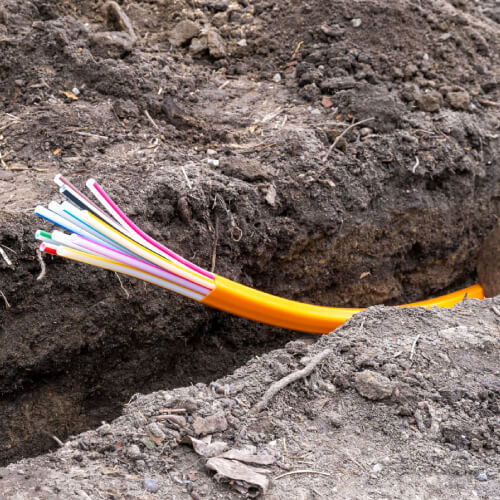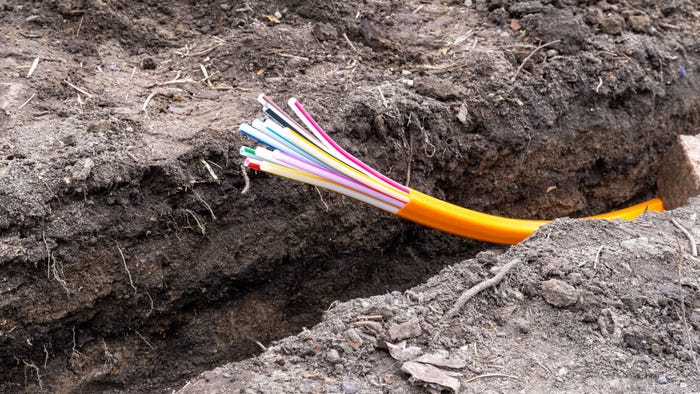'Fiber-only approach' to BEAD would cost over $200B, says Tarana
Tarana, a next-generation FWA supplier, released data showing it would cost over $200 billion to take a full-fiber approach to the $42.5 billion Broadband Equity, Access and Deployment program.

New data released on Monday by Tarana Wireless suggests that a full-fiber approach to the federal government's Broadband Equity, Access and Deployment program (BEAD) would cost upwards of $200 billion.
Tarana, a next-generation fixed wireless access (FWA) supplier, said it derived its cost analysis by reviewing public data on 132 broadband projects, funded by state broadband offices since 2019, in Alabama, California, Michigan, Nebraska and Virginia. According to the study, the selected deployments aimed to serve 52,700 homes at an aggregate cost of $733.5 million, or $13,900 per household on average, said Tarana.
The company said the projects it studied were "chosen specifically to represent fully the wide range of fiber deployment conditions and challenges across the US." Companies referenced in Tarana's sampling include Charter, CenturyLink, Comcast, Cox, Frontier and Windstream, as well as smaller regional providers like Madison Gigabit in Virginia and Duke Broadband in Michigan.
"Extrapolation from the past projects indicates that a fiber-only approach would cost well over $200B to connect the ~16M households that have been identified so far in the FCC's current broadband re-mapping effort as un- or underserved. Obviously this far exceeds the $42.45B available" for BEAD, said Tarana in a press release.
Figure 1:  (Source: Gabor Tinz/Alamy Stock Photo)
(Source: Gabor Tinz/Alamy Stock Photo)
Tarana's study comes with just over two months until the NTIA is expected to release funding allocations for states and territories, enabling states to draw up their plans for how they'll spend their BEAD dollars, and how many of those dollars will go toward fiber. Wireless companies like Tarana, as well as the Wireless Internet Service Providers Association (WISPA), have been lobbying for the NTIA to reconsider its fiber-focused rules for BEAD and make more room for technologies like fixed wireless.
To be sure, while BEAD has a fiber focus, it is technically a tech-neutral program in that it allows for the use of FWA and other technologies in regions where building fiber is too expensive. States will determine that by setting an extreme high-cost threshold, beyond which they can apply BEAD to non-fiber technologies. Thus, as written, the BEAD program doesn't mandate the $200 billion model mapped out by Tarana.
But wireless execs warn that prioritizing fiber will leave many without access for longer than necessary.
"The often-high costs and long deployment timelines of fiber in divide projects will leave millions of families unserved," said Carl Guardino, VP of government affairs at Tarana in a press release. "Some interpret the BEAD Notice of Funding Opportunity (NOFO) in the context of the Bipartisan Infrastructure Law as fiber-only, which is unrealistic and the reason why states should exercise their rights in finding a balance to ensure state and federal funds serve 100 percent of their unserved (the stated goal of the law), and to use alternative technologies — without compromising service quality — and thereby best fulfill the needs of their communities and meet the equal-access provisions in the law."
Tarana is just the latest wireless industry player to publish data warning about the limits of BEAD's fiber focus and drawing attention to FWA as a comparable broadband technology.
Back in February, another study – this one commissioned by WISPA – indicated that NTIA's BEAD rules "could plausibly increase the costs of addressing U.S. broadband needs by tens of billions of dollars and delay the realization of universal broadband benefits."
The paper, written by Dr. Bill Lehr, an economist and consultant with MIT, pointed to BEAD's restrictions on funding FWA over unlicensed spectrum (except in extreme high-cost areas) as an impediment, as well as the fact that BEAD counts households currently serviced by ISPs using unlicensed spectrum as "underserved." According to Lehr, building fiber in areas already serviced by those ISPs will lead to 1.922 million locations being "overbuilt," which could "increase costs by upwards of $30 to $60 billion," he said.
Others disagree
Different funding frameworks reveal other outcomes, however.
ACA Connects, a trade group representing small and independent cable providers, recently released a funding framework in collaboration with consulting firm Cartesian, which suggested BEAD is sufficient to reach most homes with fiber.
The Cartesian/ACA Connects study considered both a flat high-cost threshold of $9,000 per location, as well as a "maximum fiber" approach that would deploy fiber beyond that threshold. In both circumstances, the firms found that – with required provider matching funds of 25% – there is enough BEAD funding for "the vast majority of eligible locations" to receive fiber, with "a substantial share" left over for "broadband adoption and other initiatives," according to their report.
Similarly, a cost model created by tech writer Mike Conlow suggests that BEAD, with matching funds, will be able to reach roughly 76%-79% of unserved and underserved locations with fiber.
Still, there are other factors that could ultimately impact BEAD's reach – including how the government resolves concerns around "Buy America" rules, whether Congress passes legislation to prevent BEAD grants from being taxed, the state of the workforce and more.
Ultimately, the decision will rest with state broadband offices (many with support from consultants) on just how much funding they'd prefer goes to fiber versus other technologies. That picture will become clearer once NTIA allocates BEAD funds on its projected date of June 30, after which states will have 180 days to have their initial plans approved.
Related posts:
— Nicole Ferraro, editor, Light Reading, and host of "The Divide" on the Light Reading Podcast.
About the Author(s)
You May Also Like












